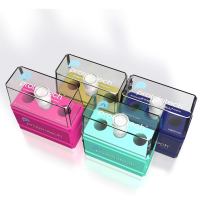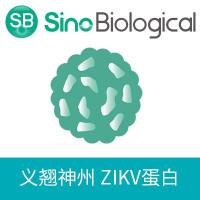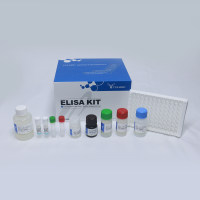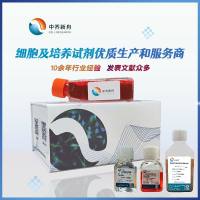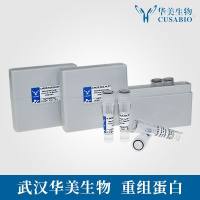Reproducible Expansion and Characterization of Mouse Neural Stem/Progenitor Cells in Adherent Cultures Derived from the Adult Subventricular Zone
互联网
- Abstract
- Table of Contents
- Materials
- Figures
- Literature Cited
Abstract
Endogenous neural stem/progenitor cells (NSPCs) residing in the subventricular zone (SVZ) of the adult mouse forebrain have been shown to enhance their neurogenic potential in response to CNS injury. Mechanisms involved in regulating adult neurogenesis under naïve or stressed conditions can be studied using a monolayer cell?culture system of the nestin?expressing NSPC lineage to analyze proliferation, survival, and differentiation. Here, a protocol for the expansion of NSPCs for studies aimed at understanding the functional role of NSPCs in maintaining adult neurogenic processes is described. This unit outlines detailed procedures for: (1) isolation, maintenance, and culture of the NSPC component of the SVZ niche from the lateral wall of the lateral ventricle; (2) characterization of NSPC functions by examining proliferation, survival, and differentiation; and (3) efficient siRNA transfection methods in 96?well format. Curr. Protoc. Stem Cell Biol. 20:2D.8.1?2D.8.10. © 2012 by John Wiley & Sons, Inc.
Keywords: neural progenitor cell; subventricular zone; cultures; proliferation; survival; differentiation; siRNA
Table of Contents
- Introduction
- Basic Protocol 1: Isolation and Expansion of NSPCs from the Adult SVZ
- Basic Protocol 2: Analysis of Proliferation, Survival, and Differentiation of Mouse NSPCs in 96‐Well Format
- Basic Protocol 3: Efficient siRNA Transfection of Mouse NSPCs Using HiPerfect System in 96‐Well Format
- Reagents and Solutions
- Commentary
- Literature Cited
- Figures
Materials
Basic Protocol 1: Isolation and Expansion of NSPCs from the Adult SVZ
Materials
Basic Protocol 2: Analysis of Proliferation, Survival, and Differentiation of Mouse NSPCs in 96‐Well Format
Materials
Basic Protocol 3: Efficient siRNA Transfection of Mouse NSPCs Using HiPerfect System in 96‐Well Format
Materials
|
Figures
-

Figure 2.D0.1 Adherent cultures of NSPCs during normal growth, differentiation, and siRNA knockdown. (A and B ) Bright field images at 10× magnification of NSPCs grown on 100‐mm plastic dishes at 24 hr (A) and 5 days (B) after plating. (C ) Double immunofluorescence labeling using anti‐nestin (green) and anti‐glial fibrillary acidic protein (GFAP; red) is used to identify neural progenitor cells and visualized under fluorescence at 10× magnification. (D ) Differentiation of NSPCs into β‐tubulin III‐positive neurons (green) and GFAP‐positive astrocytes (red) following 7 days growth factor removal is visualized under fluorescence at 40× magnification. Representative images at 20× magnification of adherent NSPCs that were cultured for 24 hr in the presence of fluorescein‐labeled control siRNA (F ; green) at 50 nM. Cells were co‐labeled with Hoechst nuclear stain (H ; blue). Scales bars = 200 µM. View Image
Videos
Literature Cited
| Literature Cited | |
| Alvarez‐Buylla, A. and Garcia‐Verdugo, J.M. 2002. Neurogenesis in adult subventricular zone. J. Neurosci. 22:629‐634. | |
| Del Valle, K., Theus, M.H., Bethea, J.R., Liebl, D.J., and Ricard, J. 2011. Neural progenitors proliferation is inhibited by EphB3 in the developing subventricular zone. Int. J. Dev. Neurosci. 29:9‐14. | |
| Doetsch, F., Garcia‐Verdugo, J.M., and Alvarez‐Buylla, A. 1997. Cellular composition and three‐dimensional organization of the subventricular germinal zone in the adult mammalian brain. J. Neurosci. 17:5046‐5061. | |
| Doetsch, F., Caillé, I., Lim, D.A., García‐Verdugo, J.M., and Alvarez‐Buylla, A. 1999. Subventricular zone astrocytes are neural stem cells in the adult mammalian brain. Cell 97:703‐716. | |
| Jin, K., Mao, X.O., Sun, Y., Xie, L., and Greenberg, D.A. 2002. Stem cell factor stimulates neurogenesis in vitro and in vivo. J. Clin. Invest. 110:311‐319. | |
| Mirzaden, Z., Doetsch, F., Sawamoto, K., Wichterle, H., and Alvarez‐Buylla, A. 2010. The subventricular zone en‐face: Wholemount staining and ependymal flow. J. Vis. Exp. 39:e1938. | |
| Morshead, C.M., Reynolds, B.A., Craig, C.G., McBurney, M.W., Staines, W.A., Morassutti, D., Weiss, S., and van der Kooy, D. 1994. Neural stem cells in the adult mammalian forebrain: A relatively quiescent subpopulation of subependymal cells. Neuron 13:1071‐1082. | |
| Phelan, M.C. 2007. Basic techniques in mammalian cell tissue culture. Curr. Protoc. Cell Biol. 36:1.1.1‐1.1.18. | |
| Ricard, J., Salinas, J., Garcia, L., and Liebl, D.J. 2006. EphrinB3 regulates cell proliferation and survival in adult neurogenesis. Mol. Cell. Neurosci. 31:713‐722. | |
| Scheffler, B., Walton, N.M., Lin, D.D., Goetz, A.K., Enikolopov, G., Roper, S.N., and Steindler, D.A. 2005. Phenotypic and functional characterization of adult brain neuropoiesis. Proc. Natl. Acad. Sci. U.S.A. 102:9353‐9358. | |
| Shen, Q., Wang, Y., Kokovay, E., Lin, G., Chuang, S.M., Goderie, S.K., Roysam, B., and Temple, S. 2008. Adult SVZ stem cells lie in a vascular niche: A quantitative analysis of niche cell‐cell interactions. Cell Stem Cell 3:289‐300. | |
| Theus, M.H., Ricard, J., Bethea, J.R., and Liebl, D.J. 2010. EphB3 limits the expansion of neural progenitor cells in the subventricular zone by regulating p53 during homeostasis and following traumatic brain injury. Stem Cells 28:1231‐1242. |


